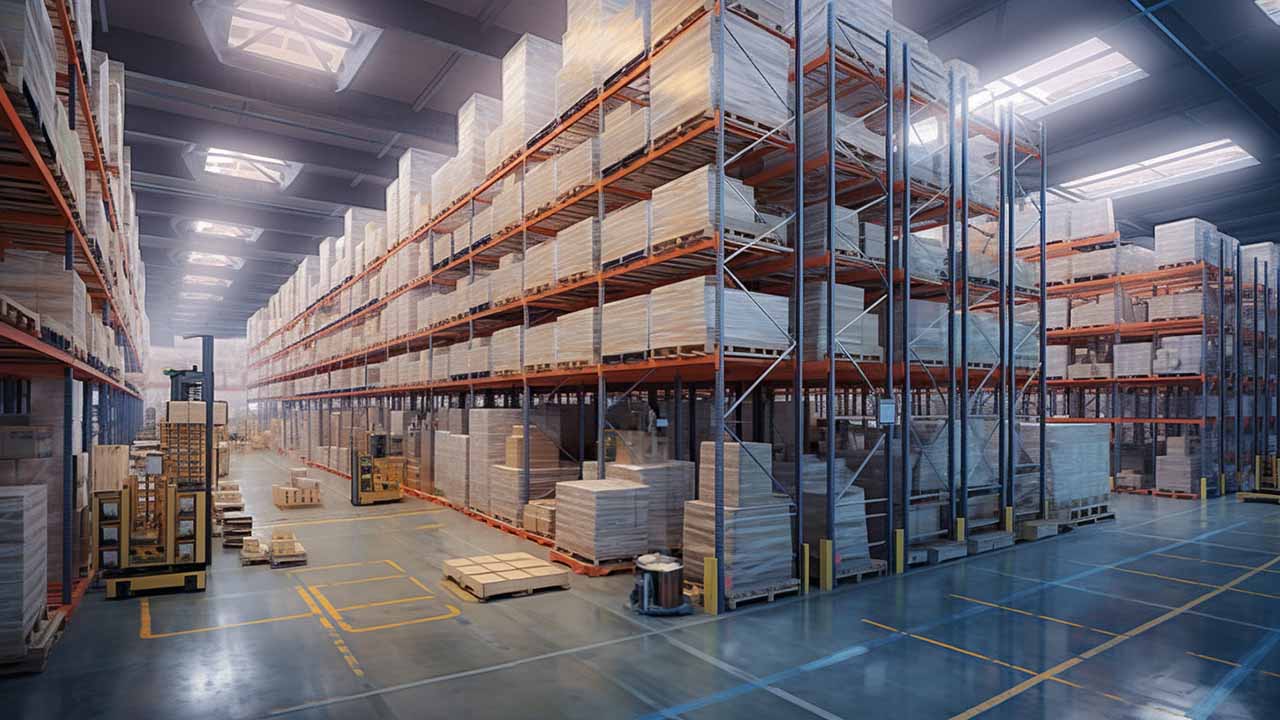Warehousing is a key player in the supply chain, facilitating the storage and transportation of goods from producers to consumers. It involves purchasing products from manufacturers and storing them until they are ready to be shipped elsewhere for distribution. Depending on the scale of operations, warehousing can take various forms, ranging from dedicated warehouse facilities to spare rooms or rented storage spaces. Here’s an overview of warehousing, its functions, types, advantages, and essential elements:
What is Warehousing?
Warehousing entails the acquisition of goods from manufacturers and their subsequent storage before they are dispatched to other locations for fulfillment. The storage may occur in warehouses, spare rooms, or other designated facilities, depending on the volume of stock and the size of the business. Even small businesses can leverage warehousing options without the need for transportation access.
Functions of Warehousing:
- Shipment Hub: Strategically located warehouses can function as shipping hubs, receiving shipments and redistributing them to other storage facilities across the country.
- Assembly Line: Warehouses can allocate areas for assembling products delivered by manufacturers in multiple pieces, streamlining the process for retailers or customers.
- Rental Storage Space: Businesses with excess warehouse capacity can rent out space to other firms, providing an additional revenue stream.
Types of Warehousing:
- Private Warehouses: Owned by private entities for storing their own products or equipment.
- Public Warehouses: Owned by government or semi-state bodies and available for rent by private firms.
- Cooperative Warehouses: Owned by cooperatives where private firms can rent storage space.
- Distribution Centers: Receive shipments of goods and expedite their movement from one location to another.
Advantages of Warehousing:
- Improved Inventory Accuracy: Enables precise inventory management and future planning.
- Reduced Overhead Costs: Optimizing warehouse operations leads to cost savings and further development investments.
- Better Staffing Levels: Allows businesses to align staffing needs with anticipated workload.
- Protection of Goods: Ensures goods are stored appropriately, meeting specific requirements such as refrigeration for perishable items.
- Central Location: Proximity to customers or manufacturing hubs facilitates efficient transit of goods, reducing lead times.
- Superior Flow of Goods: Optimal warehouse layout and storage practices promote faster movement of products.
Elements of Warehousing:
- Storage Systems: Maximize storage capacity and ensure easy access to goods.
- Climate Control: Maintain suitable environments for temperature-sensitive items.
- Inventory Management Software: Track inventory flow in and out of warehouses.
- Sufficient Staff: Keep operations running smoothly according to plan.
- Transportation and Moving Equipment: Facilitate the delivery and transport of goods.
- Ample Security: Ensure warehouse safety and security even during downtime.
Warehouse Logistics:
Warehouse logistics encompasses the management, planning, and organization of warehouse operations. It involves space management, shipment planning, and information organization to optimize warehouse efficiency. Striving for improved warehouse logistics enhances delivery times and cost-effectiveness.
Warehouse vs. Distribution Center:
While the terms “warehousing” and “distribution centers” are often used interchangeably, they represent distinct concepts. Warehouses primarily serve as storage hubs for products, whereas distribution centers handle both storage and order fulfillment operations. Understanding this distinction is essential for upgrading warehousing options effectively.
In summary, warehousing is a vital component of the supply chain, providing storage solutions and logistical support to facilitate the seamless movement of goods from manufacturers to consumers. Implementing efficient warehousing practices enhances inventory management, reduces costs, and improves overall operational efficiency.





